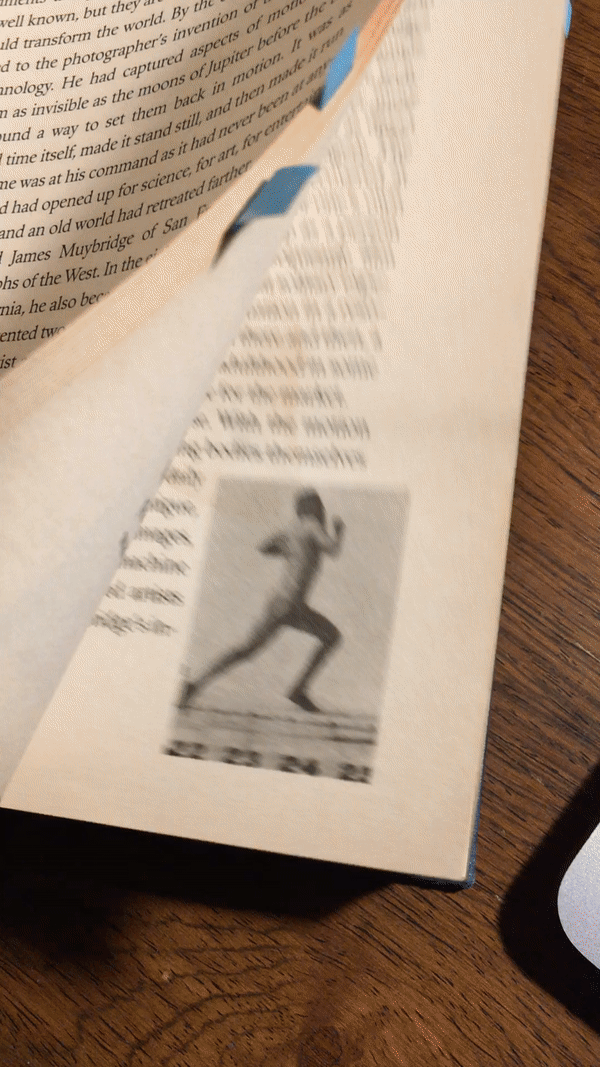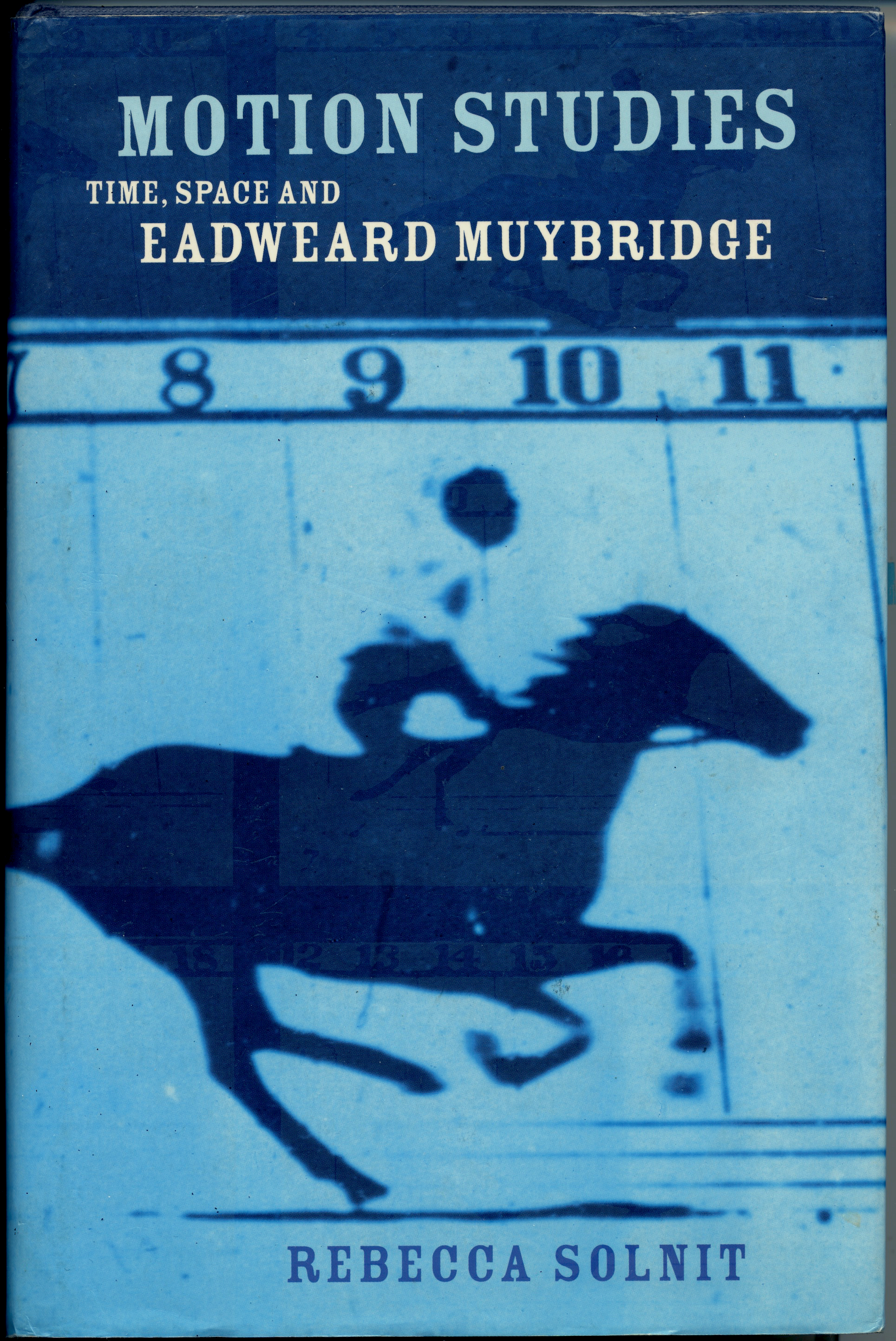

Motion Studies.
Time, Space and Eadweard Muybridge, 2003
by Rebecca Solnit
In the spring of 1872 a man photographs a horse. The resulting photograph does not survive, but from this encounter of a camera-bearing man with a fast-moving horse sprang a series of increasingly successful experiments that produced thousands of extant images. The photographs are well known, but they are most significant as the bridge to a new art that would transform the world. By the end of the 1870’s these experiments had led to the photographer’s invention of the essentials of motion picture technology. He had captured aspects of motion who’s speed had made them as invisible as the moons of Jupiter before the telescope, and he had found a way to set them back in motion. It was as though he had grasped time itself , made it stand still, and then made it run again, over and over. Time was at his command as it had never been at anyone’s before. A new world had opened up for science, for art, for entertainment, for consciousness, and an old world had retarded farther. (from: Motion Studies, Time, Space and Eadweard Muybridge)
The importance and consequences of this discovery cannot be overestimated, and thus a book dedicated to the unbelievable story of why Muybridge photographed a horse is an important narrative in its own right. But an additional reason why this is one of my favorite books (and a masterpiece) is the fact that it is a convincing account of the context in which certain inventions happen, in a combination of economic forces, willpower, timing and sheer coincidence. It makes us aware of how many things are actually connected: carving out the US transcontinental railroad track in a mountain landscape showed us a still image of geological time in a cross section of land; the speed of traveling by train gave us a different perception of time and space, as film would do after we got familiarized with looking at a moving landscape through the frame of a train window, which in turn sensitized us for the cinematic experience. And so, one thing led to another– to Hollywood and Silicon Valley.